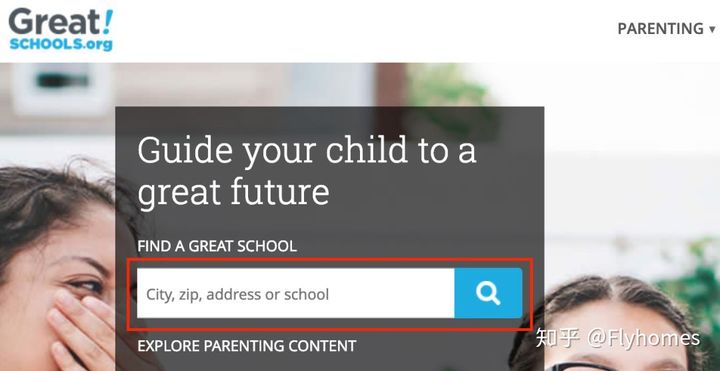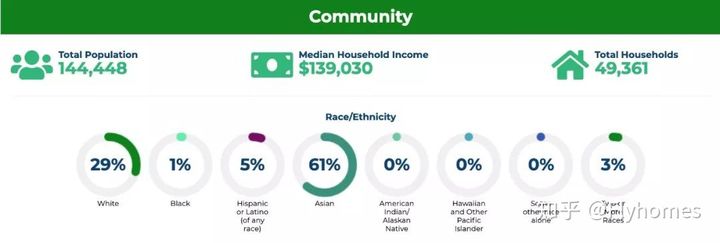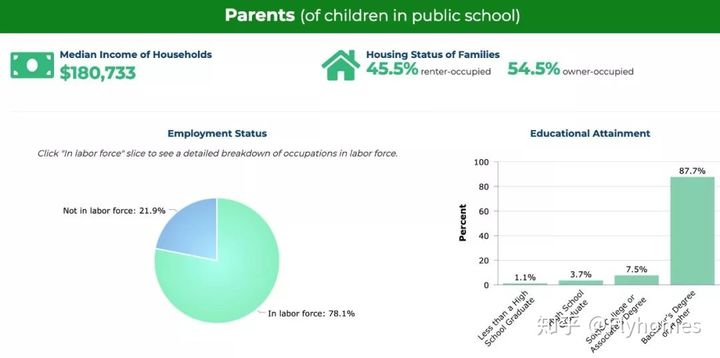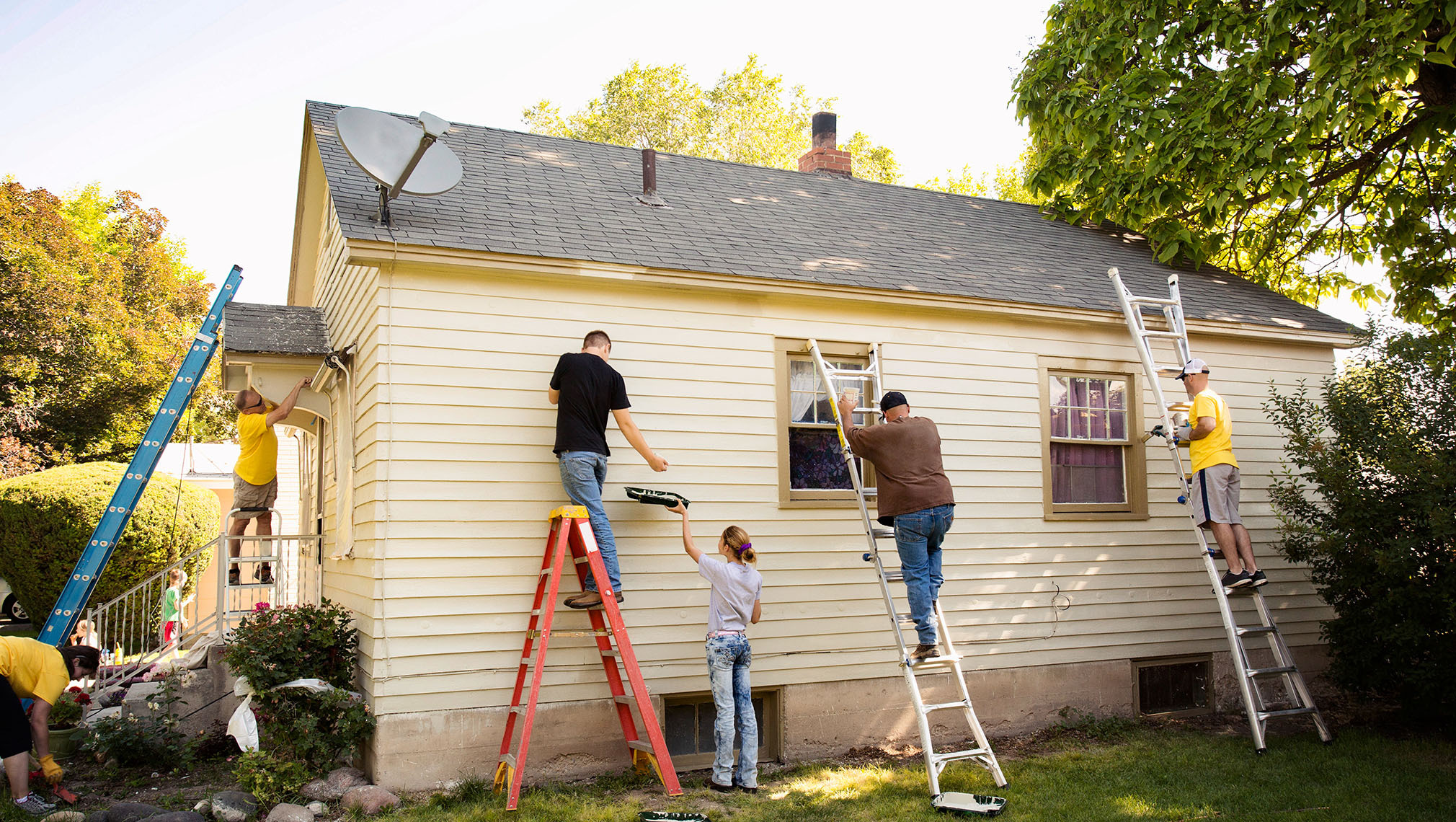
摘要:考虑每月买房成本和租房成本,排名全美适合投资的大学城,巴尔的摩排名第一,费城、香槟榜上有名。
每年的8月底9月初,全国各大高校陆续开学,美国也迎来开学季。越来越多的学生和家长更加具有投资眼光,选择在美国的大学城内购置房产,既能省去小孩每月的房租,也是一笔不错的投资:将来再出租时有稳定的房客来源,出售也是一个选择。那么单单从投资价值上看,美国哪些大学城更有优势呢?
美国适合投资的大学城买房成本
根据realtor.com的统计,首先选出全美至少有一所在校人数在1万人以上的大学城,分别比较在这些大学城的买房成本和租房成本。其中买房成本是根据大学城的平均房价,假设支付20%的首付,其余则每月支付贷款,具体成本包括每月房贷以及保险和房产税等其他房屋成本。租房成本则使用当地的平均月租金。通过这个标准,筛选出美国十大适合投资的大学城,我们来一睹为快。
# 1 巴尔的摩(约翰霍普金斯大学)
每月买房成本中位数:775美元
每月租房成本中位数:1443美元
巴尔的摩(Baltimore)位于马里兰州,房价中位数为13.14万美元,低于全国26万美元的房价中位数。约翰霍普金斯大学东南角的查尔斯村(Charles Village)是非常受学生欢迎的社区,最近复兴的东巴尔的摩发展公司项目(East Baltimore Development Inc. project)也是不错的投资选择。
# 2 南本德(圣母大学)
每月买房成本中位数:470美元
每月租房成本中位数:856美元
南本德(South Bend)位于印第安纳州,房价中位数仅为9万美元,是适合投资的十大中国城中价格最亲民的。
# 3 西拉法叶(普渡大学)
每月买房成本中位数:666美元
每月租房成本中位数:970美元
西拉法叶(West Lafayette)同样位于印第安纳州,普渡大学周围房价中位数为13.1万美元,平均有3个卧室和2个洗手间。与学校距离很近的昌西山(Chauncey Hill)社区因较好的地理位置而受学生青睐,是一个不错的投资地区选择。
# 4 东兰辛市(密西根州立大学)
每月买房成本中位数:628美元
每月租房成本中位数:930美元
东兰辛市(East Lansing)位于密西根州,房价中位数为10.7万美元,平均有3个卧室和2个洗手间。与学习距离近又有许多餐馆和酒吧的市中心是本科生十分青睐的,研究生则倾向于更为安静的Groeseck社区。
# 5 费城(宾西法尼亚大学)
每月买房成本中位数:964美元
每月租房成本中位数:1252美元
宾西法尼亚大学附近的房屋价格中位数为16.8万美元,比全国水平低。Point Breeze 以及Passyunk都是学校附近受学生欢迎的社区,适合家长投资。

# 6 大学公园市(马里兰大学)
每月买房成本中位数:1699美元
每月租房成本中位数:1971美元
马里兰大学附近的房价这十大适宜投资的中国城中价格最高的,房价中位数为30万美元,租金也是其中最高的,平均提供四个卧室和三个洗手间,也给家长更多潜在的房租收入。受学生欢迎的 College Park Woods 和 Hollywood on the Hill是家长首要考虑的投资地区。
# 7 克利夫兰(凯斯西储大学)
每月买房成本中位数:677美元
每月租房成本中位数:866美元
克利夫兰(Cleveland)位于俄亥俄州,房价中位数为12.1万美元。Coventry, North Coventry 和 Cedar-Fairmount因地理位置优越,生活便利受到学生喜爱,是较好的投资地区。
# 8 斯沃斯莫尔(斯沃斯莫尔学院)
每月买房成本中位数:1128美元
每月租房成本中位数:1252美元
斯沃斯莫尔位于宾夕法尼亚州,房价中位数为18.9万美元,市中心吸引力大量的学生入住,是不错的投资选择。
# 9 密尔沃基市(马凯特大学)
每月买房成本中位数:856美元
每月租房成本中位数:954美元
密尔沃基市同样位于宾夕法尼亚州,房价中位数为13.5万美元。密尔沃基河北边的Beerline社区是有许多新建案适合投资, Lower East Side 则有更多的选择。
# 10 香槟市(伊利诺伊大学)
每月买房成本中位数:875美元
每月租房成本中位数:956美元
香槟位于伊利诺伊州,房价中位数为14.9万美元,校园西侧的Senior Land和绿街上尼奥街和林肯大道之间的部分都是学生密集居住地,是值得考虑投资的地方。
数据来源:realtor.com


10分小学变4分!在美国买学区房要注意了!
家门口本来很优秀的10分小学、初中、高中,突然分数掉了下来,这是怎么回事?一些华人家长注意到华人圈中的传统名校更是直接掉到了7-8分。当然也有一些8分的学校,一夜之间变成了10分。
据美国中文网报道,困惑的民众很快找到了原因,原来是GREATSCHOOLS的评分标准做了改变。可这一不声不响的改变却引起了轩然大波!
学区与房价
全美公立中小学实行义务教育,几乎不用交学费。分配的学校由家庭住址决定,原则上是就近入读;当然,由于学区划分的问题,实际上你家分到的可能并不是直线距离最近的学校。
想知道自己到底被划在哪个学区?被指定了哪些学校?登陆greatschools官方网站,或者登陆zillow这样的卖房网站。
输入详细的家庭住址,就能看到assigned schools(建议向具体学区再查询确认),以及周围的其他学校列表。
公立中小学不收学费,大部分经费来自当地房产税,小部分由联邦政府、州政府、当地政府资助。也就是说,公立中小学的经费和当地房产税直接挂钩:地产税收入越多,教育经费越充足,学校发展就越好,形成“好学区”;因为学校好,更多人想购买这个学区的房子,推动房价上涨,从而能收到更多房产税,学校又能获得更多资金。因此,房价和学区是相辅相成的关系。
规矩改了 学生考的好也不算好学校
华人重视学区,往往会选择这样的学区房,greatschools也正是因为几乎与所有地产网站合作,让它的评分在买房择校上显得尤为关键。
GreatSchools.org是位于加州的一个非营利组织,对学校进行评分。10分是最高分,1分是最低分。在改革以前,GreatSchools.org是将标准化考试成绩作为唯一评分标准。
长期以来,该评分被用户作为衡量社区状况、学校质量的重要参考标准之一。但是一些教育学家和鼓励公平住房的活动家认为这些评分会加大种族之间教学质量的差异,并且直接影响了非裔、西裔等少数族裔社区的房价和他们的财富。
根据GreatSchools.org去年5月发表的一份针对加州学校的研究报告显示:在旧的评分体系下,只有2%的非裔和6%的西裔学生在评分高的学校里读书,但是白人和亚裔学生就读评分高学校的比例却高达58%和91%;有将近75%的非裔和58%的西裔学生在考试成绩差的学校里读书,但是白人和亚裔学生就读考试成绩差的学校的比例仅仅是5%和3%。
于是在这样的前提下,greatschools就放弃了以前分数当老大的标准,而同时增加了学生的进步,少数族裔的成绩和低收入学生的成绩。
其中传统考试成绩在评分中占47%,学生的进步占25%,非裔、西裔等学生和低收入家庭的百分比高达28%。
举个例子
一个小学按照旧的评分标准是一个9分的好学校。但是,该学校的一些少数族裔成绩低于州的平均水平,因此族裔这项就被评为2分。尽管该学校的考试成绩达到9分,但是少数族裔的表现欠佳将该学校的评分拉到6分。
前文说的那些10分的学校就是被这么拉下马的。
华人家长不满 为娃和房子操碎了心
这样的评分标准,自然华人家长不乐意。不少人已经表达了因此会给房价带来的担忧。
同时,也有人表示GREAT SCHOOL此举等于给自己自掘坟墓,将来不会有人再把它作为衡量学校好坏的标准。
买房慎重选择学区 跟隔壁老王聊天最踏实
除了greatschools外,美国还有很多学校评级的机构,比如大家比较关注的niche,school digger等等,华人家长重视教育,这个无可厚非。但是也不用将这些评级或者分数作为太主要的考虑。
全美每年都有顶级公立高中和私立高中(U.S. News Best High Schools Rankings)的排名,住在热门地区的家长参考这些排名是最为综合的。
不同的家庭会有不同的偏好。学校课程的设置,学校软硬件,老师的实力,又或者在传统项目上的优势,买房时还是应该多询问该地区民众,也要对这些评分的各项数据进行综合判断,才能较准确地知道你所在的城市或区域哪些学校最好。

华人如何看待学区房
华人家长最舍得投资孩子教育,因此买学区房,让孩子上好学校成了很多美国华人移民家庭的目标。然而,随着美国中产家庭的收入缩水,学区房的昂贵价格也让不少华人家庭望而却步,同时一些华人家庭认为,为小孩提供好的教育不一定要去好学区上学。
侨报记者报道称,很多华人家庭都为了孩子上学而想办法进入好的学区,一些家长租房,还有一些购买昂贵的学区房。然而,一些家长认为,让孩子接受好的教育不一定要在好的学区。
买学区房的钱可供小孩上私立学校
结婚后准备在南加州地区买房的陈女士最近在考虑是否要买学区房,她认为,学区房太昂贵,而且她计划将自己的孩子送入私立学校上学,觉得没有必要买学区房。她认为,买学区房的钱不如投资小孩教育,而且上私立学校小孩更容易进入顶尖的常青藤学校。
家住ABC学区附近城市诺瓦克(Norwalk)的陆女士的儿子刚刚加州大学伯克利分校工程学院毕业,毕业后找到了很好的工作。她回忆起教育儿子的点点滴滴时说,当年因为买不起喜瑞都学区的房子,安家在了诺瓦克,但是送儿子去了私立学校。她说,私立学校也不是很贵,但是年纪很小的儿子得到了教师足够的关注,这对小孩的发展很重要。
进入好高中更容易申请好大学吗?
在喜瑞都市有全加州排名第一的公立高中惠特尼高中(Whitney high school)。陆女士说,进入这所高中除了要考试之外还要住在喜瑞都,因此很多华人家长都“借”房子,而她儿子在上高中的时候则在喜瑞都市旁边的一所很普通的高中上学,普通高中不是像喜瑞都的惠特尼高中那么学术,所以有很多很实用的课程,例如焊接等。儿子在高中学习了焊接,所以之后在上大学的时候因此而被选拔进入全国性的一个比赛,而这些课程在惠特尼高中是没有的。
同时,随着平权法案在高等法院获得支持,学生在申请大学时分数的重要性将会大打折扣。陆女士认为,在惠特尼高中这样的学校上学,因为有太多优秀的孩子,所以不容易凸显出来,儿子当时毕业的时候是以高中第二名的成绩毕业的,所以很容易被凸显出来。在惠特尼高中这样的学校上学,小孩子大多是出自收入中等偏上的家庭,而男孩子在普通高中会比较踏实,因为环境比较朴实。
好学区亚裔占大多数 家长希望能更多元
为了能让儿子在好的学区上学,王女士多年前从中国移民过来定居到了亚凯迪亚,但是让她失望的是,大部分的学生都是华裔,她希望能让孩子多接触一些美国的文化,而不是只和华人小孩在一起。虽然学区很好,学校排名也很不错,但是总让她感觉孩子没有体验到真实的美国。
在喜瑞都居住的吴先生目前也在考虑搬家,他说,其实喜瑞都市内不同的社区有不一样的学校,他居住地方的公立小学大部分都是印度裔,他觉得有些失望,他希望能看到更多其它族裔的小孩和自己的孩子一起上学,所以考虑去别的地区买房。他说,好的学区总是亚裔学生居多,如果小孩的文化背景能更多元可能会对孩子的发展更有好处。
家长:学区房投资回报率高
除了孩子上学,一些家长购买学区房还有一个考虑就是投资回报。曾经住在亚凯迪亚的张先生说,在两个小孩还在上学年龄的时候,他们购买了亚凯迪亚一个3居室的房屋,除了为小孩子上学之外,还有一个考虑就是将来的投资回报问题,孩子上大学之后他们将房屋卖掉,已经翻了一倍的价格,这样还可以有钱在附近的城市购买一栋5居室的房屋。
他说,在2008年全美经济危机期间,房屋价格大幅下降,但是学区房的房屋价格都没有降,在房屋价格涨价的时候,普通学区的房屋价格涨幅很小,但是好的学区的房屋价格会涨得很快,因此投资学区房是非常稳定的投资。
张先生说,上学受教育很大一部分取决于家庭的教育和孩子的努力,上好的学校不一定有好的结果,但是毕竟在学校受到的影响不一样,因此他人为地让孩子去比较好的学区上学以及在好学区购房是很明智的。此外,他认为好的学区治安、环境都比较好,这样小孩子也比较安全。

美国学区房怎么划分?具体到街道和门牌号
无论是不是有娃要上学,在买房这件事儿上,学区房永远备受关注,毕竟学区好坏会直接影响房价。
今天来介绍一些关于公立学校学区划分的知识点~也教你怎么看学区房~
学区划分 ≠ 行政区划分- 同样行政区可能不是学区房
很多人以为好学区就是这个学校所在的城市/地区。结果有人买了学校旁边的房子,才知道这房子被划分到另外的学区,也就不能算学区房了。
与中国不同,美国的学区划分跟行政区划分没有直接关系。因为学区内的一切事务,都归学区政府管,学区政府独立于行政区政府。
所以如果以孩子上学为目的买学区房,一定要具体到每一个房屋的地址,查询所在的学区。新建房尤其要注意,可能会出现还没有划分学区的不确定性。
比如说,西雅图地区大名鼎鼎的 Bellevue。虽然行政区域上来讲都是 Bellevue 市,但是却分了 Bellevue、Issaquah 和 Renton 三个学区,并不是买在 Bellevue 市就在 Bellevue 学区里。

还有湾区的顶级学区 —— Cupertino 学区,如果买在 Sunnyvale 的 94087 地区,也同样包含在 Cupertino 学区里,但是 Sunnyvale 其他地区的学校可能就没有这么好。(更多关于湾区学区房~)

学区划分标准非常复杂
除了地域因素外,学区政府最关注的是:如何让学区内所有孩子都接受到教育。
因此,学区规划要考虑到很多因素,比如,每所学校的辐射范围、区域内居民的家庭情况、生源的多样化等。
有时候,学区重新规划就是为了打造“统一学区”(Unified School District),让孩子们上学更方便。比如,把一个只有高中的学区和旁边的中小学学区合并,让区内有完整 K-12 教育系统。
此外,美国的学区划分十分细致,甚至会具体到街道和门牌号。每一个家庭地址都会被划分到一个学区,都会有指定的公立学校。一般来说,学生如果想跨区上学,或者就读指定学校以外的学校,会比较困难。就算房子附近有很多所学校,孩子也只能上指定的几所。

假如真的住进去才知道要重划学区,也不要过于悲观。
有些学区非常人性化:如果孩子已经在学校读了一段时间,考虑到孩子的身心健康,学区也会让孩子留下。只是没有校车,要自己接送了。但是也有些学区非常严格,只要住址不在学区内,绝不允许在区内上学。
学区边界会轻易改变吗?我的“学区房”会变吗?
很多人会问:学区划分是不是可以轻易更改?我的“学区房”会不会一不小心变“普通房”?
对于这个问题,可以肯定的告诉你:可能性极小!因为学区划分的改变,涉及到多方利益,难度非常大!除了要学区政府牵头,还要区内选民同意,最后还要走一套复杂耗时的流程。
毕竟,任何一丁点的边界变动,无论是对学校的生源构成,还是区域房价,都会产生很大影响。因此,学区边界改变是当地社区的头号大事。各方势力据理力争,通常都是一场恶战。媒体一定会大肆报道,社区里一定会人人讨论。
讨论时间通常要至少1-2年,基本不可能出现房子今年还在好学区,明年要被划到坏学区,大家却浑然不知的情况。
为了避免这种情况,我们建议买学区房前做好调研,多关注心仪学区的相关新闻,多走访当地社区跟居民聊一下,基本上情况也能知道得八九不离十了。
如何确定我的房在哪个学区?边界上的房要怎么办?
在美国,经常出现这种情况:一个房子跟小学隔了条马路,但是却不在一个学区里,一个是学区房,一个不是。一街之隔,学区质量差之千里。

心塞的是好不容易找到一个买得起也很喜欢,却恰好在两个学区边界上的房子,怎么办?
最简单的方式是用 http://GreatSchools.org 查学区。进入网站,输入详细的家庭住址,就可以大概知道地址所属的学区和指定的学校。

但这种方法不保证信息 100% 准确。
如果房子恰好就在学区边界上,你想非常准确地知道它所属的学区,我们强烈建议你打电话咨询学区政府。不仅可以核实地址在不在学区内,还可以咨询学区划分,对房子是不是你期望的学区房也更确定。
假如要学区重划,或者有相关的居民听证会,学区政府肯定最清楚,而且也不会隐瞒。
学区政府的联系电话,一般能在学区官网上找到。
想了解整体环境,可以上美国教育研究中心官网:
输入学区的全名,会出现 District Demographics 的选项,点进去可以看见整个学区的种族构成、家庭收入、家长教育水平等信息。


学区评分标准
在美国,有专业机构根据学校的综合质量和所在社区的环境,评出1~10分,以大部分中国顾客的标准来看,Greatschool 10分制中,学区7分算可以,8分以上才算好。
学区内的高中成绩是衡量一个学区是否优秀的主要考核指标。此外,该学校的SAT成绩、学校的历史背景、学区是否有特色教育科目、学校的家长联合会的活跃程度等等。这些指标对于升大学也都很重要。
所以在选择学区时,结合分数以及综合指标来考察学校更加客观。
最后再提醒一句,买学区房前一定要做好功课,很多坑是可以提前规避的!
要是不走运,住了几年后,房子真的要被划进差学区,也不要灰心,可以组织社区里的家庭一起申诉抗争。
好的学区,房子是学区房,房价高,房产税也高。好学区突然并入了差学区,房价肯定跌,之前的高额房产税也白交了。这种情况是可以向政府申诉,甚至找律师起诉的。
尽管学区划分会改变,但这只是极少数情况。只要好学区的教育质量不下降,就算遭遇了经济危机,学区房的房价也不会受到太大打击。学区房可以说是抵御风险的一大利器。

贷款利率飙升,今夏房价将继续上涨,但增速有所放缓
去年在美联储宽松政策下,抵押贷款利率下行,美国购房需求旺盛;今年随着美联储开启加息周期,抵押贷款利率开始飙升,但专家表示,美国地产市场到2022年不会有太大的缓解。
随着美国通货膨胀以四十多年来最快速度上升,抵押贷款利率的上升和物价飙升,人们愿意支付的房价可能会受到压力。
《华尔街日报》报导,虽然出现全国性房价下跌的情况很少见——触发了2008—2009年金融危机的楼市崩盘是罕见例外,但会出现房价涨幅落后于通货膨胀的时候,这实际上使住房在一段时间内更容易负担。
对可负担住房的追逐可能会带来人们购买的房屋类型和购置区域的变化。例如,根据美国全国地产经纪商协会(National Association of Realtors)的数据,2月份西部地区成屋销量同比下降了8.3%,但在房价中值相比西部低近20万美元的南部地区,成屋销量增长了3%。
以下是多名专家对2022年美国房市的多方预测。
1. 高价房屋的竞争可能会减少
美国抵押贷款利率正在上升,本月,30年期固定利率抵押贷款的利率超过5%,这是自2011年以来首次,专业人士表示利率可能会继续上升。
“大多数买家的出价范围取决于他们每个月能负担多少,随着利率的增加,抵押贷款付款会增加。因此,抵押贷款利率的上升意味着购房者将不得不调整他们的预期,并开始在较低房价范围内选择。”个人理财公司Nerdwallet的房屋和抵押贷款专家霍尔顿‧刘易斯(Holden Lewis)对“市场观察”(Market Watch)说,“我们可能会看到对高价房屋的竞争减少,而对低价房屋的竞争会更多。”
2. 买家的选择有限
Realtor.com首席经济学家丹妮尔‧黑尔(Danielle Hale)对福克斯新闻表示,待售房屋的数量已经超过季节性低点,但仍然滞后。
黑尔说,我们正在进入挂牌售房“一年中最好的时间”,并且有更多卖家进入市场。尽管如此,黑尔警告说,“整体格局仍然是买家选择有限的局面。”
她补充说,待售房屋的销售速度很快。
“即使抵押贷款利率达到11年来最高点,房屋的要价和销售价格仍在继续上涨,购房者的预算正在捉襟见肘。”黑尔说。
根据黑尔的说法,目前,典型待售房屋的融资成本已经增加了大约40%,几乎是总体通货膨胀率的五倍。
3. 房贷利率上升或迫使部分买家退出市场
美国全国房地产经纪人协会首席经济学家劳伦斯‧云(Lawrence Yun)对“市场观察”表示:“由于利率上升对负担能力的打击,许多买家将被迫退出市场。”
“15%的房价上涨和现在高达5%的利率,增加了每月抵押贷款支付数额……肯定远远高于人们的收入增长和消费价格通胀。”他说。
4. 租金上涨伤害首次购房者
由于日常必需品成本的上涨,首次购房者并没有看到房屋净值和财富增长。
黑尔对福克斯新闻说,对于这些买家来说,在原本已经充满挑战的房地产市场,租金上涨使得首次买房者难以为首付存钱。
例如,3月是单间至两居室房产租金连续第八个月增长达到两位数。
根据Realtor.com的数据,美国50个最大的大都市租金中位数达到了创纪录的1,807美元。
黑尔说,现在,锁定住房成本,以防止不得不支付更高未来租金的动力正在增加。
5. 房价将继续上涨 但增速有所放缓
《财富》杂志本周报导,包括CoreLogic和房地美(Fannie Mae)在内的每家有公开预测的大型房地产公司都预测,来年房价将进一步上涨。
但专业人士表示,对买家来说,好消息是房价增长在2022年可能会有所放缓。Zillow表示,年度房价增长将“在整个春季继续加速,在5月份达到22%的峰值,然后到2023年2月逐渐放缓至17.8%。”
Zillow经济学家妮可‧巴肖(Nicole Bachaud)对“市场观察”解释说:“由于足够多的买家在价格上涨和抵押贷款利率之间达到承受能力上限,因此需求回落,我们将看到今年晚些时候价格增长放缓。”
“抵押贷款利率的急剧上升正在将更多购房者赶出市场,但它似乎也阻止了一些房主出售房子。由于供需双双下滑,市场不太可能很快从卖方市场转向买方市场。”房地产经纪公司Redfin首席经济学家达里尔‧费尔韦瑟(Daryl Fairweather)在一份声明中表示。
黑尔预计,“随着销售减少和卖家增加,市场将更加平衡”,房屋签订合同的价格和速度将会放缓。
尽管如此,“部分由十年来建房不足所驱动的失衡严重程度,可能意味着房地产市场会缓慢降温。”她补充道。
根据黑尔的说法,这意味着购房者和租房者“应该准备好迅速采取行动”,包括在寻找房屋或出租地点之前有条不紊地打理财务,并对自己是否能负担得起充分了解。
6. 雇员重返办公室 或影响住房选择
Realtor.com高级经济学家乔治‧拉修(George Ratiu)对“市场观察”说:“四月可能会见证消费者活动的更广泛改善,包括随着(瘟疫)大流行限制的消退,以及我们进入新常态而旅行增加。虽然公司转向办公环境并试图让员工回到办公室和拥挤的通勤中,但加薪跟不上汽油、午餐、服装和日托成本的增加,将导致员工对灵活性(工作)的需求。过去两年远程工作的成功不仅重新定义了就业文化和期望,还让美国人有机会在远离高成本市中心的地方寻找更多经济适用房。”
他也表示,一些认为自己不必亲自重返办公室的人实际上可能不得不重返工作岗位,这意味着可以看到人们从他们在瘟疫大流行高峰期购买的更多郊区房屋,搬回城市地区。
Source: Mortgage Reports

Is buying a house still worth it?
Home prices continue to climb. And interest rates have gone up as well, increasing the cost of homeownership from month to month. Unsurprisingly, many home buyers are left wondering: Is buying a house still worth it in 2022?
The short answer is yes. If you’re financially ready, buying a house is still worth it — even in the current market. Experts largely agree that buying and owning a home remains a smarter financial move than renting for many.
If you’re on the fence about a home purchase in 2022, here’s what you should consider.
In this article (Skip to…)
Benefits of buying a house in 2022
Despite the financial challenges of the current market, there are plenty of reasons why buying a home is still worth it in 2022.
1. Rising prices lead to increased equity
One of the chief benefits of owning a home is that over time, increased home equity can add to your net worth and give you a low-cost source of cash as needed. The ability to build equity is what sets homeownership apart from renting, which has no return on investment.
“Home buyers who purchase a home today are still likely to see rising property values and increased home equity. That’s because supply is still relatively low compared to buyer demand, so home prices are likely to keep rising, although at a slower pace,” notes National Association of Realtors (NAR) senior economist Gay Cororaton.
“When you couple [fixed mortgage payments] with the fact that rents are increasing at record levels, it makes more financial sense to own a home and gain the equity”
–Jason Gelios, Realtor
Cororaton points out that, even with rising mortgage rates, home prices have held up. As of March 2022, the median sales price was up 15% year-over-year.
“Although home prices have fallen approximately 30% from their peak level in 2006, they have rebounded over the years, with the median single-family existing-home sales price rising at an annual pace of 3.4% from the fourth quarter of 2006 through the fourth quarter of 2021,” Cororaton adds.
Using this metric, if you bought a home 15 years ago, you likely would have accumulated $197,500 in home equity — $141,700 of which would be price appreciation.
“Over the past 30 years, a homeowner who purchased a typical home and sold it today would likely have built up equity of $360,700,” she continues.
2. Homeownership means fixed housing costs
What’s extra nice about buying a home with a fixed-rate mortgage is that “even though the value of your home will increase, your monthly principal and interest payment will remain the same over the life of your loan,” says Jordan Fulmer, owner of Momentum Property Solutions in Huntsville, Alabama.
Jason Gelios, a Michigan-based Realtor, points out that that owning real estate is still the top way to create generational wealth. “When you also couple this reasoning with the fact that rents are increasing at record levels, it makes more financial sense to own a home and gain the equity.”
“There aren’t too many investments that can provide the returns that real estate can,” he says.
3. Owning gives you opportunities renting doesn’t
Of course, there are several other advantages to buying a home today. These include:
- The ability to customize your home the way you see fit, unlike a rental unit that likely won’t allow for personalization
- Greater privacy from neighbors, especially if you select a single-family detached home
- Home equity that can be tapped via a home equity loan or home equity line of credit (HELOC). This money can be used to fund home improvement projects, pay off debt, cover the cost of a wedding or other major expense, or virtually anything you desire
- The ability to claim a mortgage interest deduction on your taxes if you finance your property
- The chance to build a stronger credit rating and improve your credit score if you finance a mortgage and pay your bills on time
And then there are other, less tangible benefits many homeowners experience. For instance, you’ll likely have more room to raise a family and grow your household. And you may build roots in your community and enjoy greater stability over time. Consider that renters are four times more inclined to relocate in a given year versus homeowners, per the U.S. Census.Verify your home buying eligibility. Start here (May 22nd, 2022)

Disadvantages of buying a home in 2022
Of course, buying a house isn’t going to be the right move for everyone. There will be certain downsides to homeownership in any market — particularly the current one. Here’s what experts say prospective buyers should watch out for.
“One of the biggest disadvantages is the fierce competition buyers face nowadays. It’s really a dog-eat-dog market for buyers, making it more stressful to win a bid on a home,” says Gelios. “Purchasers will need to move quickly and be aware of what they are looking for in a home.”
Additionally, it’s getting more expensive to win bidding wars, leaving many would-be homeowners owners out in the cold. You don’t want to jeopardize yourself by borrowing more money and/or paying a higher interest rate than you can afford.
Furthermore, there is no guarantee that your home will continue to increase in value at the rate residences have over recent years. The NAR anticipates home price appreciation to slow to 5% by the end of the year — a rate of appreciation in line with historical norms.
But, while property values won’t continue to skyrocket as we saw in 2020 and 2021, they should keep growing over time. And even at a slow rate of appreciation, this leads to significant equity growth, making homeownership one of the best investments available.
Is it smart to buy a home with home prices so inflated?
Naturally, some home shoppers worry that buying a home is a waste of money because home prices are inflated — and if they drop, it could mean a net financial loss for those who buy at the peak of the market.
However, The experts we’ve interviewed throughout 2022 agree that a housing crash is highly unlikely.
“I don’t believe there will be a nationwide crash. For a crash to occur, the supply and demand situation would have to flip upside down, with more inventory existing than the number of buyers,” Fulmer explains.
“However,” he continues, “I believe that many markets around the country have seen artificial inflation over the last couple of years. These markets will likely see significant corrections due to rising interest rates and other economic factors.”
“If you are purchasing in an area with consistent growth and a robust economy, you likely have nothing to worry about when paying above the asking price on a house… In these markets, the value will likely continue to rise above what you paid for the house.”
–Jordan Fulmer, Owner of Momentum Property Solutions
Gelios agrees that we are not in a market bubble. “Unlike what we saw back in 2008, there are no current indicators of a housing market crash occurring. For example, we continue to have competitive homebuyers who are willing to pay cash above the asking price and a healthy job market with many positions being unfilled — two signs that we are in no way headed toward a crash.”
He adds, “Even with inflation increasing the prices of everything from groceries to automobiles, we won’t see the housing market go down anytime soon. The demand for homes will remain with us for a long time, especially as first-time buyers reenter the market this year to get their shot at owning a home.”
Keep in mind that most people shopping for homes today are millennials who have postponed buying a house and are eager to become first-time homeowners. As Gen Y continues to feel pressure to accommodate their partners and children, they will join in hunting for and buying homes. That means pricing pressures aren’t going anywhere.
“If you are purchasing in an area with consistent growth and a robust economy, you likely have nothing to worry about when paying above the asking price on a house — assuming you can afford the monthly payment,” adds Fulmer. “In these markets, the value will likely continue to rise above what you paid for the house.”Verify your home buying eligibility. Start here (May 22nd, 2022)
Buying versus renting in 2022
While home prices have increased rapidly over the past two years, renting isn’t always a more affordable alternative. Rent prices have been skyrocketing in many places, too.
“We are seeing rental increases of $300 extra per month in my market. That impacts how much you can spend on your basic life necessities like groceries, gas, and utilities,” says Christian Ross, managing broker at Engel and Volkers in Atlanta. “There is also a persisting shortage of rental supply in many markets, meaning you may have an easier time finding a home for sale than a rental.”
Housing payments vs. rent payments
“I would focus more on your monthly payments than the likely prospect of home appreciation and increased equity,” he continues. “If your mortgage payment will be less than you would pay in rent for a similar house, you should probably go ahead and purchase a home.”
Suzanne Hollander, a real estate law professor at Florida International University in Miami, says it’s crucial to perform your due diligence here.
“To know if it’s more expensive to buy or rent in your market, you need to do your homework and calculate the math. Learn the sale prices of comparable properties in your area and the rental prices for leased properties. Calculate the amount of your monthly mortgage payments based on your research of the likely sale price compared against the amount of your expected monthly rental payment,” she recommends.
Mortgages are fixed, rents are not
Keep in mind that if you choose a fixed-rate mortgage loan to finance a property, your monthly principal and interest payments will stay the same throughout your loan’s term. (Though keep in mind that property taxes and homeowners insurance rates can increase over time.)
“In contrast, rental rates are not predictable,” says Hollander. “Normally, a tenant signs a one-year rental contract. And at the expiration of the contract, the rental rate will probably increase. Only five states and the District of Columbia have rent control laws in place.”
If you expect a job relocation or a move in the next few years, it may be more advantageous to rent than purchase, however. That’s partially because you’ll incur closing costs on a home purchase, which may equal 2% to 5% of your borrowed amount. It will probably take a few years to recoup those costs, which requires staying put.
Your next steps
Still undecided about buying versus renting?
“Consult with an experienced Realtor and mortgage lender, who can help you explore what options are available at your budget and shine a light on your financial situation,” advises Ross.
Also, carefully research the state of your local market.
“If there is an influx of jobs, there will probably continue to be more buyers and sellers, resulting in continued growth in home prices,” says Fulmer. “In a less robust market, it might be smarter to continue renting in anticipation of a possible market correction and lower home prices.”
The bottom line? Provided your finances are in order, your job is secure, you can afford the monthly payments, you’re working with a skilled real estate agent, and you will remain in place for at least a few years, buying a home will not be a waste of money in 2022, the pros agree.
Buying a Fixer Upper: How to Find, Afford and Improve a Fixer-Upper Home
Searching for your dream home and wondering if it’s worth buying a fixer-upper and making it your own? Here’s what you need to know.
In this article:
- What is a fixer-upper home?
- Should I buy a fixer-upper home?
- How to find fixer-upper homes
- What to look for when buying a fixer-upper home
- How to buy a fixer-upper
- Financing options with fixer-upper loans

While the process of buying and renovating fixer-upper homes has increased in popularity due to fix-and-flip home improvement TV shows, not everyone is cut out for major renovation projects.
In fact, only 19% of homeowners said their home needed serious updates, and only 3% said their home needed a complete overhaul, according to the Zillow Group Consumer Housing Trends Report 2020.
Buying a fixer-upper involves purchasing the least desirable home on the block and overseeing its transformation. Whether you’re considering a fixer as an investment — and you plan to sell after construction is complete — or you’re fixing up a home to make it your own, there’s a lot to consider when buying a fixer-upper, from home price to construction costs to financing.
What is a fixer-upper home?
A fixer-upper is a home that needs repairs, but not so many that it’s uninhabitable or worthy of being torn down.
Fixer-uppers are usually offered for a lower price than homes in better condition, which makes them appealing to buyers looking to maximize their purchasing power or investors looking to flip the property and turn a profit.
Should I buy a fixer-upper home?
Most often, people buy fixer-upper homes because the cost of purchasing the home plus renovation costs may total less than what they’d pay for a comparable home in good condition.

Here are some of the key reasons buyers decide on buying a fixer-upper:
Reduced price
If you have your eye on a popular neighborhood, either for resale value or your own lifestyle, you may be able to get a better deal buying a fixer upper in your desired location and renovating it than purchasing an already-updated home.
Customizable improvements
When you purchase a fixer-upper, the sky’s the limit when it comes to fixtures and finishes (within your budget, of course). Renovating a fixer-upper can be ideal for buyers with very specific tastes or those who want more control over the aesthetics of their home. When buying a fixer-upper, you avoid paying for the renovations someone else completed, especially if you don’t like them.
Older home charm
The character of older homes isn’t easy to replicate. Buying an older home in need of some TLC can allow you to restore and maintain time period details, while bringing the home up to today’s efficiency, safety and comfort standards.
Make a profit
Whether you’re planning to flip or live in the home for a few years before selling, you may be able to turn a good profit based on the renovations you make. Your return on investment depends on the types of renovations you complete, the materials you use and the quality of the work. If profit is the goal, select popular home improvements in your market to increase property value and appeal to a wide variety of buyers.
Tax incentives
In some metropolitan areas, such as Philadelphia and Cincinnati, buyers who purchase a fixer-upper and renovate to improve the property value may be eligible for a tax abatement or credit.
How to find fixer-upper homes
Finding the right fixer-upper is all about where you look. Here are a few strategies for finding the right home.
Want to find fixer upper homes in your area? Narrow down your search using the Keyword section of the Zillow app.
Search online: Use Zillow to search for homes below market value. You can search keywords such as “fixer upper,” “needs work” or “TLC” to narrow down potential properties.
Work with an agent: A local buyer’s agent should be able to help you find fixer-upper homes in your desirable neighborhoods. Well-connected agents may even be able to show you homes that haven’t hit the market yet, via word of mouth.
Search auctions, foreclosures and short sales: Distressed properties may be in fine structural condition but are sold below market value in order to offload them quickly. It’s important to note that these homes are usually sold as-is, and disclosures might not be available, so be sure you have enough extra money in your budget to cover surprise issues.
What to look for when buying a fixer-upper home
When shopping for a fixer-upper, prioritize the things you can’t change about a home (like its location), or things that would be too costly to change (like significant structural renovations). Here are key factors to consider:
Location
Location is the most important thing to look for, because it can’t be changed. Look for a fixer-upper in a desirable or an up-and-coming neighborhood in order to maximize potential resale value. Finding the right location will also ensure that you’re happy in the home. Pay attention to things that might be important to you, like school ratings, nearby parks and restaurants and commute times.
The home’s location will also play a part in determining your renovation budget and estimating the home’s post-renovation value. The quality of finishes and upgrades you select should be in line with comparable homes in the same neighborhood if your goal is to recoup costs on resale.
Layout and size
With a fixer-upper, you might be able to change the layout as you see fit, but pay attention to any design and layout ideas that would require removing load-bearing walls. This can be a costly exercise, and sometimes it’s just not possible. Home additions to increase square footage are also expensive and might not be allowed, depending on local zoning requirements and laws.
Home condition
There’s a difference between a fixer-upper and a home with significant structural defects. Structural and mechanical problems are a lot more expensive to fix than cosmetic ones. Be sure to hire a home inspector to gain knowledge of the home’s positives and negatives — hiring a home inspector is an invaluable step, even if you’re buying a home as-is. Here’s what should be on your home inspection checklist for a fixer-upper:
- Strong foundation
- Up-to-code electrical
- Proper plumbing
- Solid roof condition (should come with roof certification)
- HVAC and/or central AC
- Functional windows
Straightforward cosmetic updates
Prioritize homes that have outdated or worn out finishes that don’t appeal to the general public but can be updated affordably and without too much effort. Ideally, the fixer-upper you buy will only need cosmetic upgrades. Look for homes with:
- Peeling or dated paint (interior and exterior)
- Older bathroom fixtures and tile
- Dated kitchen cabinetry
- Laminate or tile countertops
- Stained carpeting
- Hardwood floors in need of refinishing
- Leftover belongings or trash that need to be removed
- Neglected landscaping
- Old or non-functioning appliances
How to buy a fixer-upper
Buying a home that needs work can be risky, because you won’t know the full condition of the home until you start tearing down walls. That’s why doing your due diligence on the property and neighborhood ahead of time is key.
Get a professional home inspection
When you put an offer on a house, be sure to include an inspection contingency. An inspection contingency allows you to back out of a deal and get your earnest money deposit back if the inspection reveals that the home has serious hidden defects.
Even homes marketed as being in “as-is condition” can be inspected — the only difference is with an as-is home, the seller is telling you that they do not want to make any repairs based on your findings.
The buyer is responsible for the cost of an inspection, which ranges between $250 and $700, depending on the size of the home and your location. In addition to a general inspection, you might also opt for specialized inspections for trouble areas. Common specialty inspections include pests, sewer lines, radon, lead-based paint and structural inspections. Costs for specialty inspections are similar to general inspections.
A structural inspection reviews the home’s structural integrity, but also lets you know of any natural hazards nearby that could impact the resale value or your own health and safety. You may also consider hiring a structural engineer to assess the property before you make an offer. It will cost between $500-$700 but could save you thousands of dollars in future foundation repairs.
Hire an architect and general contractor
An architect can create a new layout for a home, create plans and blueprints and tell you what is and isn’t possible. Some cities require you to submit architectural plans to acquire home permits, making an architect a necessity. The average cost for an architect is around $5,000, depending on the scope of your project.
Your home inspector should be able to give you a rough estimate of what it would cost to adequately repair problem areas that come up in an inspection, but since they’re not the one who will be doing the work, it’s best to get a more accurate quote from a contractor. Whatever they quote you, add a 10% contingency for any problems that come up along the way. Be sure to get quotes from a few contractors and do your due diligence in checking their licensing and customer reviews.
Budget for improvements
Working with your contractor, be sure that your budget takes into consideration all applicable costs. Don’t forget to include:
- Permit fees, if applicable
- Cost of materials, like flooring, paint, light fixtures, cabinetry, countertops and hardware
- Cost of labor, including general contractors, plumbers, electricians and inspectors
- Cost of living during renovations, if the home will be uninhabitable during the project
Know your limits
Above and beyond the financial concerns, you also need to gauge your tolerance for a major renovation project, especially if you plan to save money by doing some of the work yourself. Home renovations are not as easy as they look on TV and if it’s your first time, a lot can go wrong. Even if everything goes right, there’s a lot of hassle involved in a large-scale construction project. You’ll have to live in a construction zone or move elsewhere temporarily, while still paying all the carrying costs for the home. Finally, the project could take a lot longer than you expect due to supply-chain issues that have affected the cost and availability of many construction materials.
Financing options with fixer-upper loans
You can purchase a fixer-upper with a traditional conventional loan then pay for all the improvements out of pocket. Or, you can get a fixer-upper mortgage that’s designed to help you finance both the house itself and the renovations. Common types of home loans for fixer-uppers are:
FHA 203(k) standard
An FHA 203(k) Standard loan finances the purchase and renovation of a primary residence. Here are the key requirements:
- Minimum credit score of 500 with a down payment of 10%, or a credit score of at least 580 with down payment of 3.5%
- The total cost of the loan must fall under FHA mortgage limits in your area
- No luxury improvements (like pools) are allowed, but structural work is allowed
- Requires a HUD consultant to approve the architectural plans, oversee payments to contractors and review inspections to ensure the home meets structural integrity and energy efficiency standards
- There are limits on how soon you can resell (not within 90 days)
- The contractor is paid out of an escrow account managed by the lender
FHA 203(k) streamlined
This financing option has similar requirements as the FHA 203(k) Standard, but it’s meant for simpler, cosmetic renovation projects, as it has a spending limit.
- Minimum credit score of 500 with a down payment of 10%, or a credit score of at least 580 with down payment of 3.5%
- For cosmetic upgrades under $35,000
- There are limits on how soon you can resell (not within 90 days)
- The contractor is paid out of an escrow account managed by the lender
HomeStyle loan
A HomeStyle loan is a combination home loan and home improvement loan, guaranteed by Fannie Mae.
- Minimum credit score of 620; minimum down payment of 3 or 5%, depending on a few factors like owner occupancy, first-time home buyer status and income
- Allows for other improvements that aren’t covered under an FHA 203(k), like pools and landscaping—but note that all improvements need to be “permanently affixed to real property (either dwelling or land)”
- The contractor is paid out of an escrow account managed by the lender
- You must use a certified contractor
CHOICERenovation
A CHOICERenovation loan is a combination home loan and home improvement loan, guaranteed by Freddie Mac.
- You can finance renovations that cost up to 75% of a home’s value
- Money can be used for upgrades that prevent natural disasters
- You can DIY the work and get a down payment credit
- Requires multiple appraisals to ensure you’re upholding the terms of the contract and that the agreed-upon renovations make the home meet its estimated value

